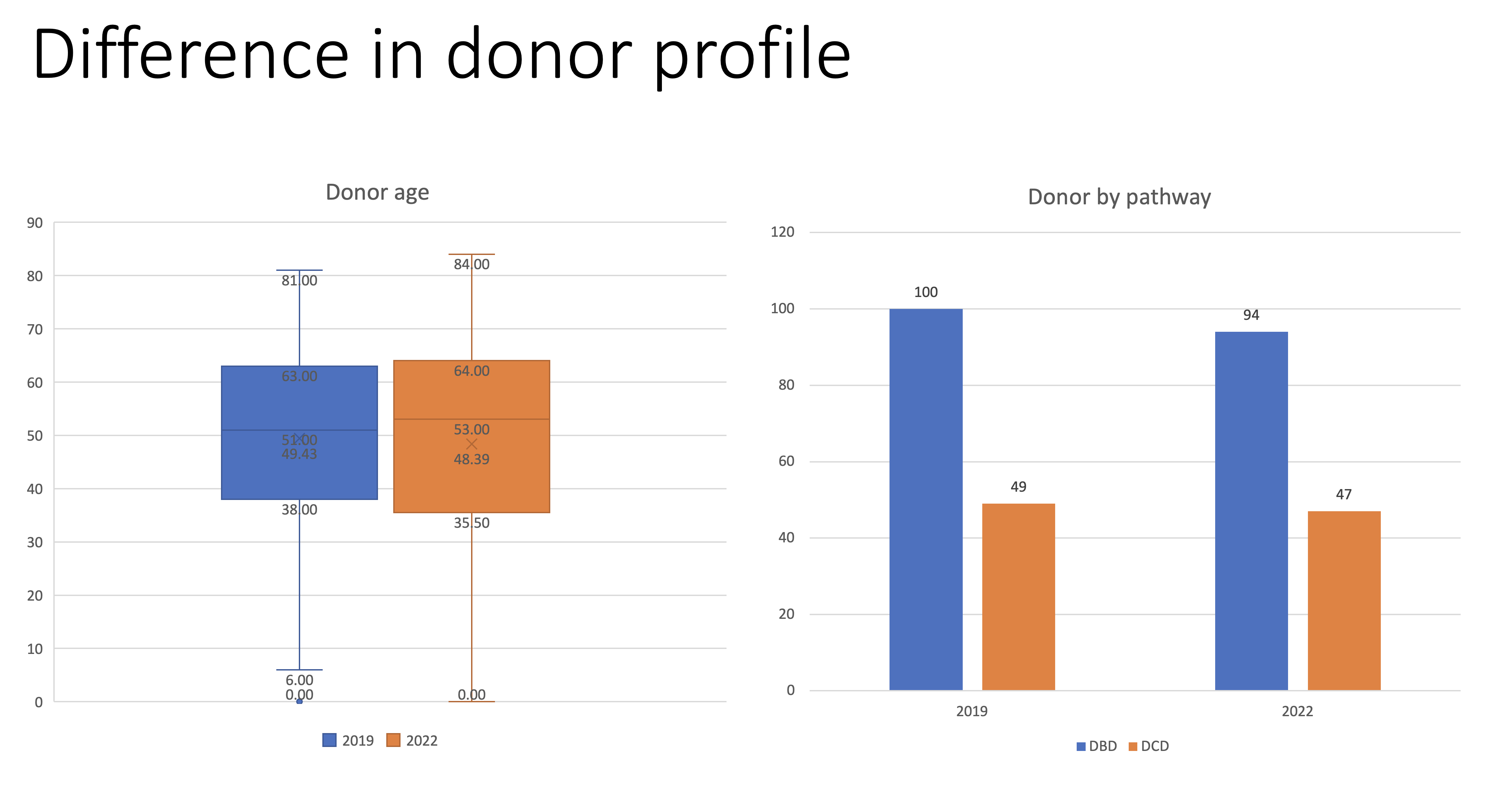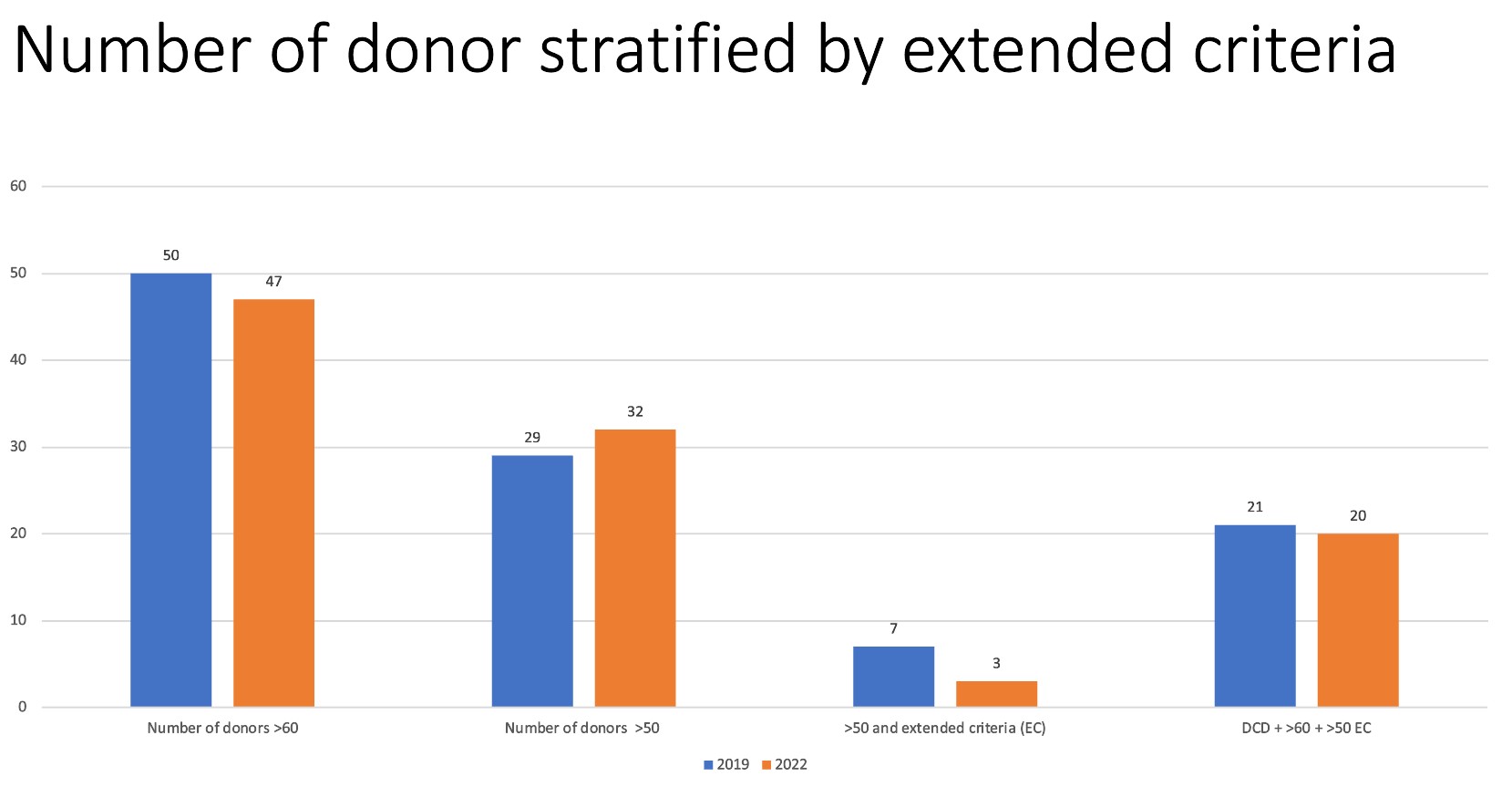The legacy of COVID on NSW renal graft offers
Elena Cavazonni1, Mike Boyle1, Laura Gladkis2, Michael J O'Leary1.
1New South Wales Organ and Tissue Donation Service, Sydney, Australia; 2Organ and Tissue Authority, Canberra, Australia
Introduction: COVID and the associated pandemic have significantly strained healthcare systems worldwide, including reducing the number of reported renal transplants. In contrast to many other countries, over 2020-2021 Australia had a low COVID mortality rate and did not report unprecedented pressures on intensive care units. Similar to many other countries, however, in early 2020 a decision was taken to suspend renal and pancreatic transplantations for eight weeks whilst the pandemic unfolded, and subsequently kidneys from COVID-positive donors were not utilised. In early 2022 normalisation of practice occurred and the donation and transplantation sector agreed that kidneys from COVID positive donors could now be utilised. We have assessed the utilisation of renal grafts in the pre (2019) and post (2022) pandemic periods.
Methods: We extracted data on all New South Wales consented renal donors from the Electronic Donor Record for the periods 01-01-2019 to 31-12-2019 and 01-01-2022 to 31-12-2022 including donor demographics, comorbidities, donation pathway, the outcome of all renal offers and whether the donor was an expanded criteria donor (EC) (>60 years of age, or > 50 years and two of the following (a) history of hypertension, (b) terminal creatinine of ≥133 mmol/l or (c) death due to stroke).
Results: There were 149 consented renal donors with 282 renal grafts available in 2019, and 141 renal donors with 265 grafts available in 2022. We found no significant differences in donor age or donor pathway or the number of EC donors between the two years. The number of offers per available graft were however greater in 2022 compared to 2019 (883 vs 707), yet despite this the number of kidneys accepted for transplantation was lower (225 vs 263).


Conclusion: Despite no apparent difference in the profile of deceased renal donors in 2022 compared to 2019 we found a reduction in the acceptance rate of renal offers. As this reduction in acceptance cannot be explained by the "quality" of the donors, it is likely that there are ongoing stressors affecting transplant unit decision making and activity. Further investigation is imperative to identify these stressors such that utilisation rate from consented donors in the post-COVID era is optimised.